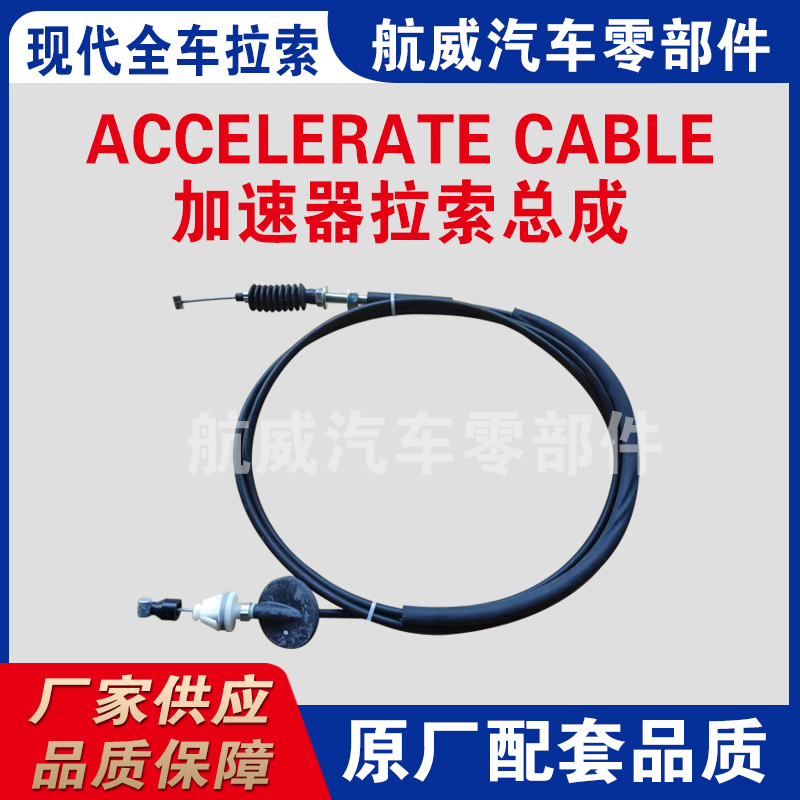clutch cable assembly
Understanding Clutch Cable Assembly Essential Components of Vehicle Performance
The clutch cable assembly is a crucial component in many manual transmission vehicles, playing an integral role in ensuring smooth gear shifts and overall driving performance. This article delves into the specifics of clutch cable assemblies, their function, construction, maintenance, and signs indicating the need for replacement.
What is a Clutch Cable Assembly?
A clutch cable assembly consists of a cable that connects the clutch pedal to the clutch release mechanism in the transmission. When the driver presses the clutch pedal, the cable transmits this mechanical force, allowing the clutch to disengage and the driver to shift gears. This assembly includes various parts such as the cable housing, the inner cable, and the fitting ends that connect to the pedal and the clutch fork.
The Function of the Clutch Cable
The primary function of the clutch cable assembly is to facilitate gear changes in a manual transmission vehicle. When the pedal is depressed, the cable pulls on the clutch fork, disengaging the engine from the transmission. This allows the driver to change gears without grinding or damaging the transmission. A properly functioning clutch cable is essential for vehicle performance and driving comfort.
Construction of Clutch Cable Assemblies
Clutch cable assemblies are constructed from durable materials to withstand the rigors of daily use. The inner cable is typically made of steel, which is strong and flexible, while the outer housing is often made of a tough plastic or metal to protect against wear and environmental factors. Additionally, each end of the cable is fitted with specific connectors designed to ensure secure attachment to the clutch pedal and the transmission, allowing for efficient power transfer.
Signs of Clutch Cable Issues
As with any mechanical component, clutch cable assemblies can wear out over time. Recognizing the signs of a failing clutch cable is crucial to maintaining vehicle performance. Common symptoms include
1. Difficulty Shifting Gears If you experience resistance or a grinding sensation when shifting, it may indicate a problem with the clutch cable.
clutch cable assembly

3. Unusual Noises Hearing squeaking, grinding, or rattling noises when engaging the clutch could signal that the cable needs attention.
4. Visible Damage Inspecting the cable for frays, bends, or breaks can help identify any issues. A damaged cable should be replaced immediately to avoid further transmission damage.
Maintenance of Clutch Cable Assemblies
Regular maintenance of the clutch cable assembly can extend its lifespan and ensure optimal performance. Some tips for maintaining these components include
- Regular Inspections Check the clutch cable periodically for signs of wear, fraying, or visible damage.
- Lubrication Applying appropriate lubrication to the inner cable can help reduce friction and prevent rust, ensuring smoother operation.
- Adjustment In some instances, the clutch cable may require adjustments to maintain proper tension. Consulting the vehicle's manual for specifications is essential.
Conclusion
The clutch cable assembly is a vital component that plays a significant role in a vehicle’s manual transmission system. Understanding its function, recognizing signs of wear, and ensuring proper maintenance can greatly influence driving performance and vehicle longevity. Regular attention to this assembly not only aids in seamless gear shifting but also contributes to overall safety on the road. If you suspect any issues with the clutch cable, seeking assistance from a qualified mechanic can help prevent potential complications, ensuring your vehicle remains in top condition for years to come.
-
Workings of Clutch Pipe and Hose SystemsNewsJun.04,2025
-
The Inner Workings of Hand Brake Cable SystemsNewsJun.04,2025
-
The Secrets of Throttle and Accelerator CablesNewsJun.04,2025
-
The Hidden Lifeline of Your Transmission Gear Shift CablesNewsJun.04,2025
-
Demystifying Gear Cables and Shift LinkagesNewsJun.04,2025
-
Decoding Clutch Line Systems A Comprehensive GuideNewsJun.04,2025
